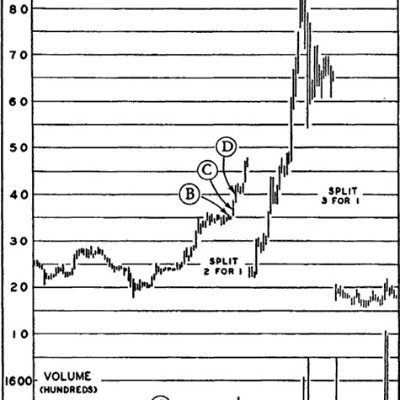Everyone knows +6% monthly compounded gain will give you a +100% annualized gain. But very few dissect this +6% gain into what is required of your average trading proficiency. Let me give a quick but conservative case of 25% win rate month revolving controlled avg R loss at -0.7, and purely a 0.17% risk to equity of start month. 1. Risk: 0.17% risk to equity per trade (a single R loss is 0.17% of account equity) 2. Trade frequency: 64 trades, 16 win, 48 loss. 3. Win rate: 25% only 4. Avg R gain 4.3 multiples, Avg Holding Period For winning trade (<15 days) 5. Avg R loss -0.7 multiple, Avg Holding Period For Losing trade (<4 days) 6. Profit Factor: 6.14 7. Gain to Pain: 2.1 If you use this as a benchmark and strive to improve the numbers here, control what you can control specifically on your losses, you can hit +100% year even with a few controlled losing months.
Everyone knows +6% monthly compounded gain will give you a +100% annualized gain. But very few dissect this +6% gain into what is required of your average trading proficiency. Let me give a quick but conservative case of 25% win rate month revolving controlled avg R loss at -0.7, and purely a 0.17% risk to equity of start month. 1. Risk: 0.17% risk to equity per trade (a single R loss is 0.17% of account equity) 2. Trade frequency: 64 trades, 16 win, 48 loss. 3. Win rate: 25% only 4. Avg R gain 4.3 multiples, Avg Holding Period For winning trade (<15 days) 5. Avg R loss -0.7 multiple, Avg Holding Period For Losing trade (<4 days) 6. Profit Factor: 6.14 7. Gain to Pain: 2.1 If you use this as a benchmark and strive to improve the numbers here, control what you can control specifically on your losses, you can hit +100% year even with a few controlled losing months.
A trader with consistent 35%> win rate YoY avg with the above simple trading philosophy can be a deadly weapon in the market.
anyway, for those curious on the performance of @Qullamaggie 25% win rate in 2019, I believe it was +52% even after a big loss of -30% in $TLRY alone. This hero has much more complex performance based analytics than mine (logarithmic scale equity curve) and he studies himself. youtu.be/Z6DzD-gMvpw?si…
@jfsrevg Problem with people optics is they belive they will have 1 winner 3 or 4 losers. But reality is tahr it will be 20-40 losers in row and 10 winners in row. You got losers in sideway market and when strong trend appear- trade after trade is profitable.
@jfsrevg the problem is that not every month the market is suitable for a method....
@jfsrevg what happens when there is a total sell off in the market and almost all your positions have hit 1R loss? What do you do? Do u take losses on that day and wait for better entry points?
@jfsrevg Didn’t realize there was a picture. Took me three tries to bookmark this post.
@jfsrevg Who knew trading was just fancy math with extra stress! 🤯💸
@jfsrevg What entry type does satisfy a 4 R on average over the 14 days minimum holding period? And what daily chart does coherently fits this return profile; alternatively said, what is the day you have to buy on a daily chart and how you track it (in relation also with mkt action)....
@jfsrevg Can you do the math for 30% win rate. Appreciate the info
@jfsrevg Hi jeff, sorry for a stupid question. What is gain to pain ratio?
@jfsrevg As always great insight @jfsrevg but if you’re buying momentum stocks at or near ATHs do you have a view on how to calc your R:R?
@jfsrevg The win rate is very difficult to control. Using the same buying strategy, some months can achieve over 80%, while other months only reach 16% (my stop loss is set at 0.3%-0.6%).
@jfsrevg The low win rate and edge aren't mutually exclusive. They're different sides of the same coin. Few can tolerate the loses. Those that can, profit. Great insights. Thanks!















